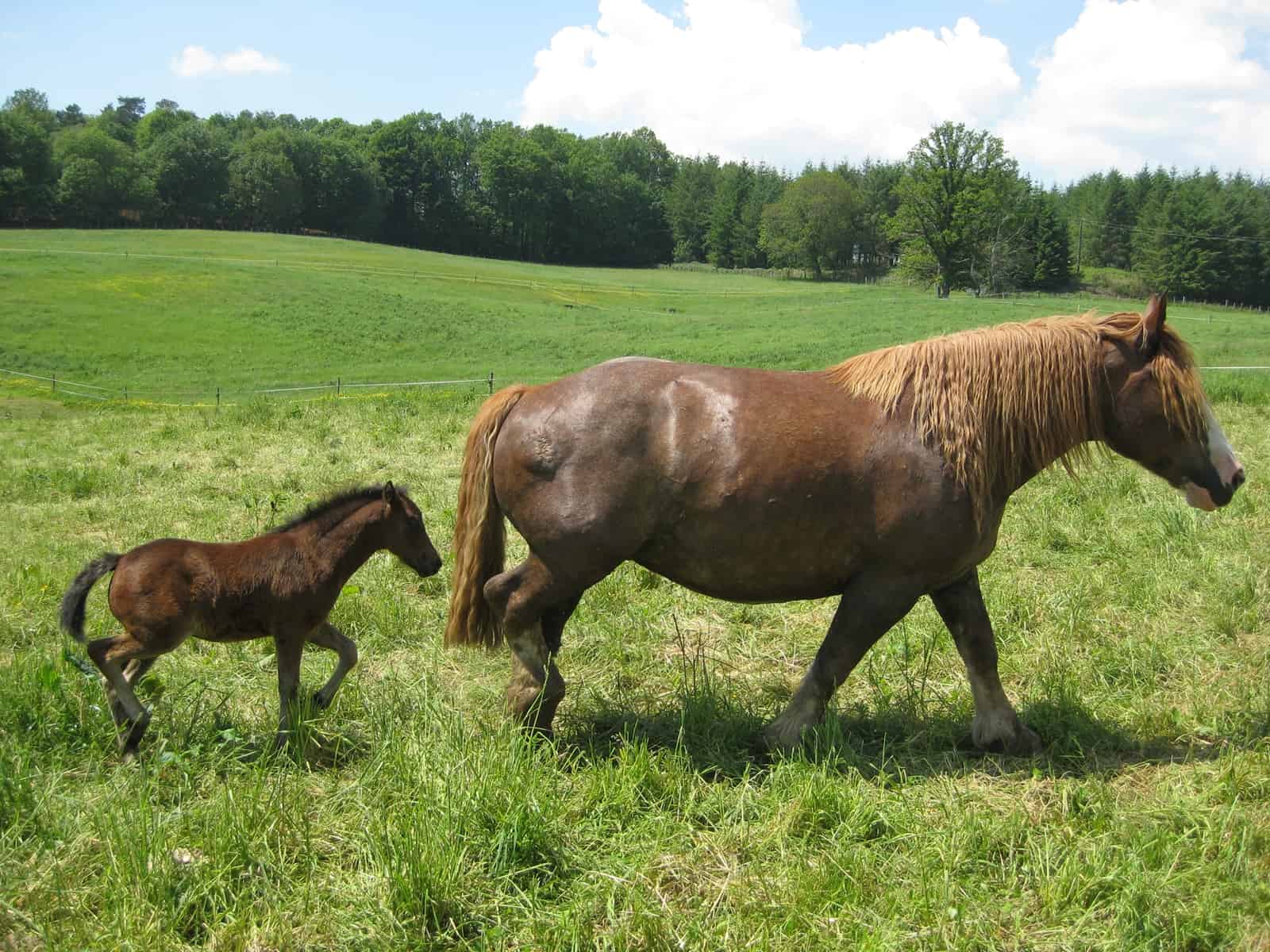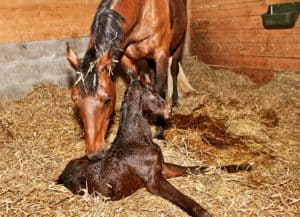Embryo Transfer in Horses: What You Need to Know

You own your dream mare. She’s a star in the show ring, she has a kind and genuine personality, and she has bloodlines worth preserving and continuing. You want to breed her, but removing her from training and the show season to carry and raise a foal will take important time away from her competition years.
Fortunately, you can reduce your special mare’s time spent sidelined to as little as a few days and protect her from the potential risks associated with carrying and birthing a foal. Breeding using embryo transfer and a surrogate mare is a common practice today, and it’s allowed elite mares to spend their best years in the competition ring while producing foals at the same time.
Today, equine embryo transfer is a routine practice, there are still a number of things for mare owners to consider before taking the plunge. Here’s what to know.
The Players: The Donor Mare and the Recip Mare
The two main players in breeding via embryo transfer are the donor mare and the recipient mare.
“One of the benefits of embryo transfer is that mares can be competing and still be an embryo donor,” said Julie Strachota, DVM, MS, an assistant professor of health programs at the Michigan State University College of Veterinary Medicine . “There are circumstances where mares continue in training and are bred and flushed on an outpatient basis.”
Meanwhile, the ideal surrogate, or recipient mare, is healthy and young (usually 3 to about 13 years old), has an appropriate body score, and is up to date on all preventive health measures such as deworming and vaccinations, Strachota said. Most importantly, she has a healthy reproductive tract and no history of barrenness, she added.
Reproduction centers around the country maintain herds of recipient mares that veterinarians can select to best match the donor mare’s physical traits and reproductive cycle (synchronized cycles between donors and recipients are important to increase the likelihood of a successful pregnancy).
“When using a reproduction center with many recipient mares, two to three recipient mares will be timed up for a single ovulation,” Strachota said. This is beneficial if, for example, because it offers viable backup options if on the day the embryo is flushed one of the recipient mares has intraluminal fluid or a general health issue that would prevent her use.
On the other hand, owners can opt to use another mare they own, but this comes with its own set of challenges.
“For example, if the recipient does not ovulate within the ideal window, she will not be an ideal candidate (to match with) the donor mare,” Strachota said.
If need be, veterinarians can use medications to synchronize mare’ estrous cycles. For instance, administering altrenogest for two weeks followed by administration of prostaglandin F2α often results in the mare cycling and ovulating within about a week.
A recipient mare’s size is also an important consideration, Strachota said, because recipient mares can have significant impacts on the resulting foal’s birth size. In a study using pony, average horse, and draft horse mares and foals, researchers found that average horse foals born to pony recipient mares weighed 37% less than horse foals born to average horse mares. On the other hand, pony foals born to draft recipient mares were 57% heavier at birth than pony foals born to pony mares. The researchers also determined that the recipient mare impacted the foals’ wither height, leg bone length, barrel circumference, and growth rate.
As such, Strachota said, it’s advisable to use a recipient mare that’s a similar size and shape to the donor mare.
The Embryo Transfer Process
The donor mare should first undergo a breeding soundness exam to ensure she’s in good reproductive health, said Strachota. “The donor mare will then undergo routine breeding management including artificial insemination,” she said.
A veterinarian will monitor the donor mare’s estrous cycles and, shortly before the mare ovulates, will artificially inseminate her.
“When selecting appropriate recipient mares for a given donor mare, the recipient mare should have ovulated one day ahead of the donor mare to three days after the donor mare,” Strachota said. “Many would agree that the ideal recipient would have ovulated one to two days after the donor mare.”
Once a donor mare is selected, the veterinarian will flush the donor mare’s uterus to retrieve an embryo; “The majority of mares are flushed seven or eight days after ovulation is confirmed,” Strachota said.
If an embryo is retrieved, the veterinarian will implant it into the recipient mare’s uterus. About a week later, the veterinarian will perform an ultrasound to ensure the recipient mare is, indeed, pregnant and everything looks normal. If all looks good, the recipient mare will develop, birth, and raise the foal while the donor mare continues her training and competitive schedule.
Other Considerations
Of course, breeding via embryo transfer isn’t an inexpensive endeavor. Fees can vary among reproduction centers, and even for uncomplicated procedures, producing a foal via embryo transfer can cost thousands of dollars in addition to stallion breeding fees.
And, while donor mares don’t necessarily have many risks to contend with during embryo transfer, they can still develop issues such as accumulation of uterine fluid after breeding or persistent mating-induced endometritis, Strachota said.
“This should be addressed immediately to prevent further uterine inflammation and possible infection,” she said.
Strachota also noted that having a donor mare produce her own foal at least once by the time she’s about 10 years old is beneficial. “She should also be allowed to carry a foal to term every three to four years subsequently,” she said. This will help maintain her reproductive health, because otherwise some mares will develop cervical pathology if they are not allowed to successfully carry foals.
Take-Home Message
Performed correctly and with a positive outcome, breeding using a surrogate mare can allow elite mares to pass their bloodlines to the next generation while building their own competitive resumes or avoiding potential risks associated with carrying and producing foals.
Strachota also stressed that owners should understand breeding is an elective procedure with associated costs and risks, so they should consider it carefully before proceeding, “but there’s nothing more rewarding than seeing an embryo in a dish and then seeing the recip mare foal out,” she said. “It’s a wonderful opportunity to produce offspring we might not have been able to previously.”

Written by:
Erica Larson
Related Articles
Stay on top of the most recent Horse Health news with















